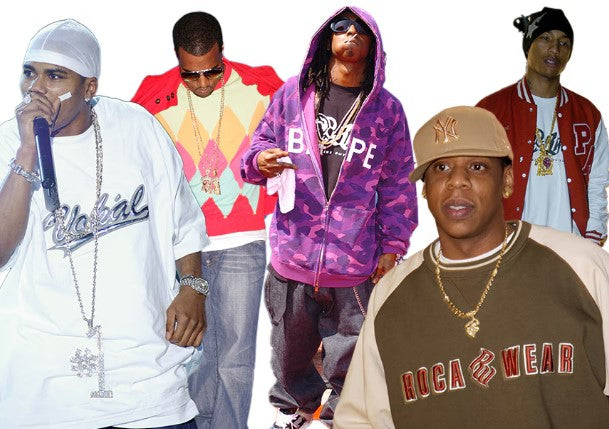STYLE AND CULTURE
Streetwear has grown from underground movements into a global phenomenon, blending music, sports, and fashion into a culture that transcends boundaries. To understand where we are today, we need to look back at the movements and pioneers who set the stage.

SUBCULTURES COLLIDE
In the early 1980s, hip-hop was rising in New York, and with it came a unique style that extended beyond music. Tracksuits, Kangol hats, adidas sneakers, and gold chains became synonymous with the culture. Across the country in LA, skaters embraced rugged denim, graphic tees, and Vans, laying the groundwork for another core pillar of streetwear.
Hip hop icons like Run DMC helped solidify the relationship between music and fashion, especially when they inked one of the first-ever endorsement deals with adidas. At the same time, LL Cool J was rocking Troop tracksuits and heavy gold chains, symbolizing the brash confidence of the era.

KEY PIONEERS
SHAWN STÜSSY
What began as a surfboard signature in California became a worldwide logo. In 1984, Shawn Stüssy founded Stüssy, one of the first true streetwear brands. His bold logo and limited-run tees created a blueprint for the exclusivity that defines streetwear today.

MICHAEL JORDAN
1984 was also the year Nike released the Air Jordan 1. Despite the NBA banning them, Nike turned this into a marketing win. The sneaker became an icon of rebellion, sparking the sneakerhead culture we know today.

NIGO
In 1993, Japanese designer Nigo founded A Bathing Ape (BAPE). Its camo prints and ape logo became a status symbol across Japan and America, later amplified through Pharrell Williams and the Billionaire Boys Club brand.

CELEBRITY AND LUXURY
The late 90s and early 2000s were the golden era of celebrity-driven streetwear. Artists like Jay-Z, Lil Wayne, Kanye West, and Pharrell Williams turned streetwear into a global movement.
Bling culture—chains, luxury goods, and designer collaborations—bridged the gap between streetwear and high fashion. Louis Vuitton’s Collab's with Marc Jacobs and Takashi Murakami marked a new era of streetwear entering luxury spaces.
THE 2010s TO NOW

The rise of social media took streetwear to new heights. Virgil Abloh’s Off-White blurred the lines between streetwear and luxury, while Supreme’s infamous drops became cultural events. Tyler, The Creator and Odd Future redefined skater-inspired streetwear, making pastel colours, bold graphics, and playful designs mainstream.

Today, streetwear is everywhere—from TikTok outfit checks to luxury fashion weeks. Brands like Carhartt WIP, AAPE, and Obey keep the culture alive, while the scene continues to expand globally.
THE FUTURE: UK STREETWEAR ON THE RISE
In 2025, UK streetwear is making a global mark. Brands like Represent and Cole Buxton are pushing British design to international audiences, proving that London and Manchester can influence just as much as Tokyo, LA, or New York.
And it’s not just the established names. Up-and-coming brands like Flow Like Zen are building momentum with bold aesthetics and a focus on cultural storytelling, signaling that the next chapter of streetwear will be more diverse and exciting than ever.

Streetwear is no longer underground—it’s global culture. But at its heart, it’s still about community, identity, and expression.

